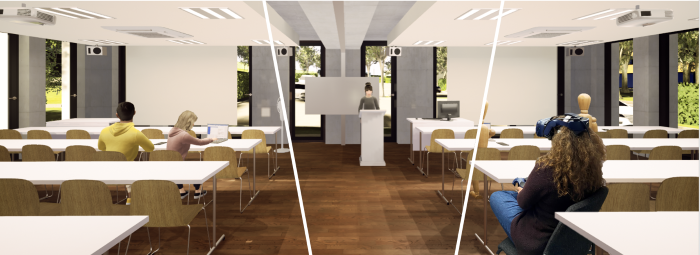Audiovisual Coherence: Is Embodiment of Background Noise Sources a Necessity?

Exploring the synergy between visual and acoustic cues in virtual reality (VR) is crucial for elevating user engagement and perceived (social) presence. We present a study exploring the necessity and design impact of background sound source visualizations to guide the design of future soundscapes. To this end, we immersed n = 27 participants using a head-mounted display (HMD) within a virtual seminar room with six virtual peers and a virtual female professor. Participants engaged in a dual-task paradigm involving simultaneously listening to the professor and performing a secondary vibrotactile task, followed by recalling the heard speech content. We compared three types of background sound source visualizations in a within-subject design: no visualization, static visualization, and animated visualization. Participants’ subjective ratings indicate the importance of animated background sound source visualization for an optimal coherent audiovisual representation, particularly when embedding peer-emitted sounds. However, despite this subjective preference, audiovisual coherence did not affect participants’ performance in the dual-task paradigm measuring their listening effort.
@ InProceedings{Ehret2024b,
author={Ehret, Jonathan and Bönsch, Andrea and Schiller, Isabel S. and
Breuer, Carolin and Aspöck, Lukas and Fels, Janina and Schlittmeier, Sabine
J. and Kuhlen, Torsten W.},
booktitle={2024 IEEE Conference on Virtual Reality and 3D User Interfaces
Abstracts and Workshops (VRW): "Workshop on Virtual Humans and Crowds in
Immersive Environments (VHCIE)"},
title={Audiovisual Coherence: Is Embodiment of Background Noise Sources a
Necessity?},
year={2024}
}

